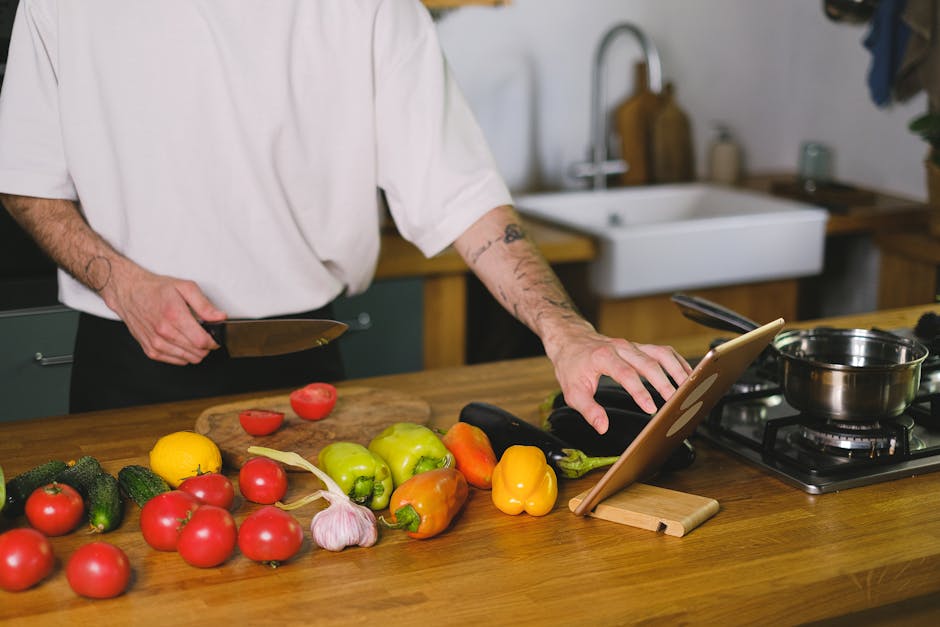Making Extra Money by Writing Recipe Ebooks

Writing recipe eBooks has become a popular way for individuals to make extra income, especially for those passionate about cooking and sharing their culinary expertise. With the rise of digital publishing platforms, it’s easier than ever to create, market, and sell eBooks without needing a traditional publisher. For aspiring food writers or home cooks looking for an additional source of revenue, writing a recipe eBook can be a lucrative and creative endeavor.
Whether you’re an experienced chef or someone who simply loves experimenting in the kitchen, creating your own eBook allows you to share your unique recipes with a global audience. Unlike traditional cookbooks, eBooks offer flexibility in terms of format and distribution. Additionally, they can be more cost-effective to produce, making them accessible for anyone willing to put in the time and effort.
Why Recipe eBooks Are Profitable
The demand for new and exciting recipes is always present. People constantly search for easy-to-follow, delicious recipes to try at home, and many prefer the convenience of having these in digital format. The low production costs compared to printed books make recipe eBooks especially profitable. You don’t need to worry about printing or shipping expenses; once your book is created, it can be distributed through numerous platforms without ongoing overhead costs.
Another key factor is that many online platforms allow self-publishing. Sites like Amazon Kindle Direct Publishing (KDP), Apple Books, and even Etsy enable anyone to publish and sell digital products with minimal barriers to entry. These platforms handle the technical side of things (like payment processing) so you can focus on writing great content.
Choosing a Niche
The first step in writing a successful recipe eBook is deciding on a niche that resonates with readers. While general cookbooks are still popular, niche topics often attract more focused audiences who are willing to pay for specialized content. Consider what sets your recipes apart from others, is it a specific dietary need like gluten-free or vegan dishes? Maybe it’s a regional cuisine or quick meals for busy professionals.
- Healthy eating (e.g., keto, paleo)
- Quick and easy meals (for working parents or students)
- Ethnic cuisines (e.g., Mediterranean, Indian)
- Desserts and baking
- Seasonal dishes (e.g., summer BBQs, holiday feasts)
Your niche should align with your expertise and interests while also addressing a gap in the market. Research existing cookbooks on popular platforms to see which niches are already saturated and where there might be room for fresh ideas.
Structuring Your Recipe eBook
A well-organized eBook is key to keeping your readers engaged. Begin by outlining the structure before diving into the writing process. Most successful recipe books follow a similar format:
- Introduction: Briefly introduce yourself and explain what readers will gain from the book.
- Recipe Index: A table of contents listing all recipes included in the book.
- Recipe Sections: Divide recipes into categories based on meal type (breakfast, lunch, dinner) or ingredients (vegetarian, meat-based).
- Nutritional Information: If relevant, provide nutrition facts for each recipe.
When writing each recipe, be clear and concise in your instructions. Include detailed measurements and step-by-step guides so that even beginner cooks can follow along without confusion. High-quality photographs can also enhance the appeal of your recipes, consider investing in basic food photography equipment or hiring a professional photographer if necessary.
Marketing Your Recipe eBook
Once your recipe eBook is complete, marketing becomes essential to ensure it reaches as many potential buyers as possible. Social media platforms such as Instagram, Pinterest, and Facebook are perfect spaces for promoting food content because of their visual nature. You can share snippets of your book like teaser images of recipes or short videos demonstrating how to cook one of the dishes featured in your eBook.
Email newsletters are another effective way to reach an audience that already follows you for food-related content. Collecting email addresses through your blog or social channels allows you to inform potential buyers directly when your book is available.
- Create social media posts with high-quality photos of featured dishes.
- Offer limited-time discounts or pre-order bonuses to incentivize early purchases.
- Collaborate with food influencers who can review or promote your book within their community.
- Add links to purchase your book across all relevant platforms (e.g., Instagram bio link).
If you already have an active blog or website dedicated to food topics, make sure to utilize SEO (Search Engine Optimization) techniques when promoting your eBook online. This could involve writing blog posts that tie into the theme of your book while embedding purchase links within the content.
Earning Potential and Pricing
The earnings from selling recipe eBooks can vary depending on several factors: niche demand, marketing efforts, platform fees, and pricing strategy. Typically, most self-published authors price their eBooks between $2.99 and $9.99, a sweet spot where customers feel they’re getting value without overspending on digital content.
Amazon KDP offers royalties between 35% and 70%, depending on how you price your book. Pricing it too high might deter some buyers; pricing too low might undervalue the effort put into creating it. Striking this balance takes time but researching comparable books within your niche will help guide your decision-making process. If promoted correctly and targeting the right audience, it’s not uncommon for successful authors to generate consistent monthly income from their books over time.
Writing recipe eBooks offers both flexibility and profitability for those passionate about cooking and sharing their favorite dishes with others. Selecting a niche audience, structuring the content effectively, leveraging marketing tools like social media, and optimizing pricing strategies allows anyone to turn their love for food into a viable source of extra income. With minimal startup costs and access to large digital marketplaces like Amazon KDP or Apple Books, launching a successful recipe eBook is within reach of anyone dedicated to making it happen!
